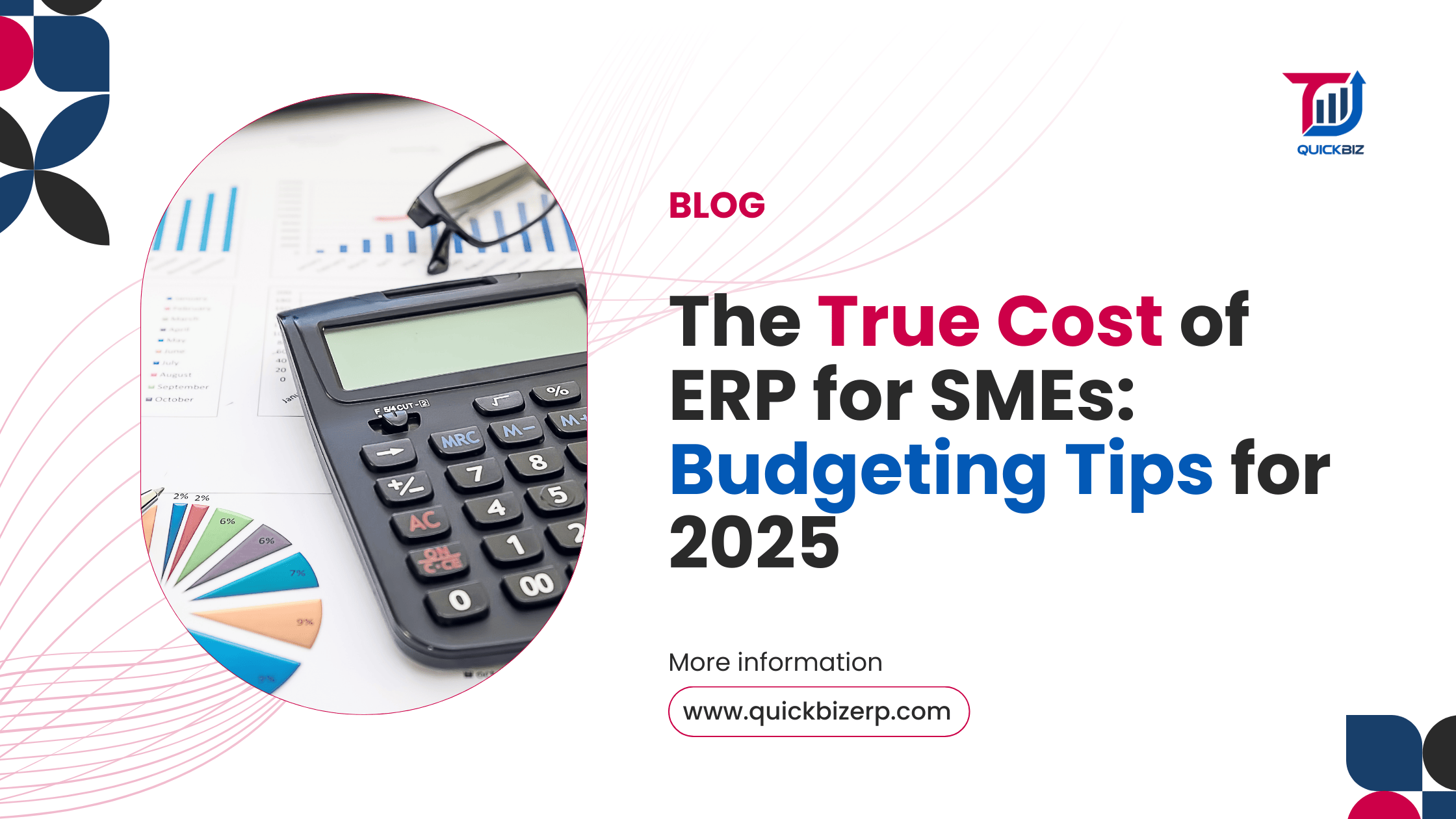The True Cost of ERP for SMEs: Budgeting Tips for 2025

Introduction
For small and medium enterprises (SMEs), investing in an ERP (Enterprise Resource Planning) system is a big decision. While the immediate price tag of an ERP solution may appear straightforward, the true cost goes far beyond the upfront investment. In 2025, the ERP landscape continues to evolve with trends like AI integration, cloud migration, and modular design, all influencing pricing structures. SMEs must adopt a holistic budgeting strategy that includes both visible and hidden costs to ensure long-term value.
1. Understanding ERP Cost Components
To accurately budget for ERP, SMEs need to understand all the components involved:
- Software License vs. Subscription Fees:
On-premise ERPs typically involve a one-time licensing fee, whereas cloud-based ERPs charge recurring monthly or annual subscriptions. Subscription models may appear affordable upfront but accumulate over time. - Hardware & Infrastructure (On-Premise vs. Cloud):
On-premise systems require investments in servers, storage, and backup, adding to capital expenditure. Cloud ERPs eliminate this need, shifting the cost to operational expenses. - Implementation and Setup:
This includes project management, configuration, and testing. Implementation costs can vary depending on the complexity of the business processes — which can be managed better by following a structured ERP implementation strategy. - Customization and Integrations:
Adapting the ERP to meet unique business workflows or integrating with third-party systems like CRMs, payment gateways, or e-commerce platforms can significantly drive up costs. - Training and Onboarding:
An often underestimated component, training is essential for adoption. SMEs must account for workshops, documentation, and support during the learning phase. Explore proven tips to improve ERP training and adoption. - Ongoing Maintenance and Support:
Post-implementation support, bug fixes, system upgrades, and vendor support contracts are recurring costs that must be included in the budget. Learn how to create an ERP maintenance plan that works.
2. Hidden Costs You Might Overlook
Even with a thorough cost breakdown, many SMEs are surprised by hidden expenses. Here are some common ones:
- Downtime and Transition Costs:
During the switch from legacy systems to ERP, businesses may face operational slowdowns. Consider real-world ERP transition experiences to better understand potential transition costs. - Cost of Switching Vendors:
If a vendor doesn’t deliver as promised or if the business outgrows its ERP, switching systems can be costly in terms of both time and money. - Data Migration Complexities:
Transferring legacy data into a new ERP system requires cleansing, formatting, and validating. Smooth data handling and integrations can reduce unexpected delays. - Upgrades and Scalability:
As your business grows, your ERP must scale. Not all systems scale affordably or efficiently, and upgrades might require additional licensing or module costs.
3. Cloud ERP vs. On-Premise ERP: Cost Comparison for 2025
- Subscription vs. One-Time Investment:
Cloud ERPs offer predictable costs and faster deployment. On-premise ERPs may offer long-term savings for stable businesses but require higher upfront costs. - Scalability and Resource Costs:
Cloud solutions are easier to scale with demand. On-premise systems may require more infrastructure for growth. - Long-Term ROI:
Cloud ERP typically ensures faster updates, better integrations, and lower IT overhead, translating to higher ROI over time. However, on-premise systems may suit businesses with stringent data control requirements.
4. Tips to Budget Effectively for ERP in 2025
Budgeting is not just about finding the lowest quote — it’s about building a roadmap for long-term success. Here's how:
- Conduct a Needs Assessment:
Identify your core processes and the exact features needed. Avoid overspending on unnecessary modules. - Prioritize Must-Have Features:
Separate essentials from "nice-to-haves" to stay focused and cost-efficient. - Compare Vendors and Hidden Fees:
Don't just compare prices — ask about hidden ERP costs like implementation delays, support tiers, or additional user licenses. - Plan for Future Scalability:
Your ERP should grow with you. Ensure the platform offers flexible plans and integrations for future needs. - Set Aside a Contingency Budget:
Unforeseen issues are inevitable. Having a 10–15% buffer in your ERP budget can save you from unexpected disruptions.
5. How SMEs Can Maximize ROI from ERP Investments
After implementation, maximizing value from ERP depends on continuous improvement:
- Measuring Success with KPIs:
Track key performance indicators like inventory turnover, order accuracy, and productivity to evaluate ERP success. Leverage ERP data reporting to drive decisions. - Regular Audits and Usage Reviews:
Periodic reviews can identify unused modules or processes that need optimization. - Training and Internal Adoption Strategies:
Ensure staff are fully trained and comfortable with the system. An underused ERP is a wasted investment.
Conclusion
Investing in ERP is not just a financial decision — it’s a strategic one. By understanding the true cost of ERP and planning carefully, SMEs can transform their operations without overspending. In 2025, with smarter budgeting, better planning, and a clear focus on ERP ROI, ERP systems can serve as a growth engine for SMEs — not a financial burden.

